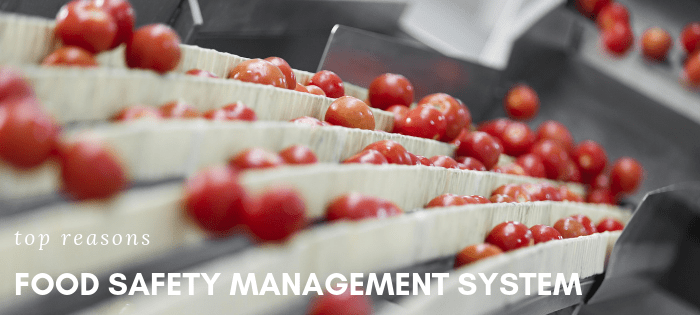
Food Safety
Comments: No Comments
Designing and implementing a compliant Food Safety Management System (FSMS) can help organizations improve in many areas beyond the system’s defined tasks. It is critical for management to align the food safety objectives with the business needs for a successful and meaningful program implementation. Here are some of the top reasons why companies that work in the food industry may want to pursue developing and implementing an FSMS:
10. Identify and categorize the organization’s food safety risks.
Once this information is known, management can prioritize and decide how to eliminate or reduce business risks and liabilities to acceptable levels. These risks are often better controlled through strict management accounting. As a bonus, employees will become more attuned to thinking about risks and helping management improve overall operations.
9. Develop work instructions and/or procedures to guide employees’ actions and to ensure that each food safety task is completed in a disciplined manner and approved by management.
This will reduce the risk to an organization of an employee accidentally making a food safety mistake that causes the employee or others to be harmed (or worse). It also reduces the company’s risk of government inspections, fines, poor public perception, and loss of business due to a possible recall.
8. Assure management that they, in fact, know and understand the regulatory food safety requirements that must be met daily.
These requirements can be a driver of continual improvement by ensuring that the company has up-to-date procedures and work instructions for employees to follow every day.
7. Develop meaningful goals and objectives that drive food safety performance improvements and possibly reduce additional costs.
Each business will have different goals and these goals will likely change each year. Goals assure continuous improvement in food safety performance for the business over time.
6. Create a strong training and educational program that stems from well-written procedures and work instructions and that clearly defines the company’s requirements.
A well-trained workforce is a motivated and happy workforce. Turnover is reduced, accidents and incidents decrease, and production efficiencies increase. Employees are very aware when an organization takes time to ensure that each job requested is completed in the safest manner possible.
5. Develop appropriate monitoring and measurement practices.
Once all food safety requirements (e.g., FSMA, USDA, GFSI) are known and understood, the organization will be able to gauge food safety performance based on scientific data and regulations, and then guide the organization’s actions in a direction of continuous improvement and compliance.
4. Verify the FSMS is functioning as designed and implemented.
By continuously auditing each food safety program and function, the organization will discover issues of concern and non-conformances prior to an incident or agency/certifying body finding. Routine, non-biased audits allow the company to choose a timeframe that will help improve the situation without undue influence by outsiders.
3. Monitor and trend issues of concern and/or non-conformance and the actions used to rectify them through a fully functioning corrective/preventive action program.
As employees watch management fix problems, they will learn that management is concerned about continuous improvement. This will prompt employees to start making their own improvement suggestions. These suggestions will further drive improvement in areas outside the original FSMS.
2. Evaluate the business model and the FSMS in a holistic fashion.
By using this self-reflection and identifying improvement opportunities, management can direct responsibilities for improvement actions across many departments of the company. Each of these improvement opportunities has the potential to help the bottom line and reduce the possibility of a food safety liability now or in the future.
1. Know that the company has done everything to maintain the business in a manner that meets all food safety rules and regulations.
The last and most important benefit for an organization that goes through the process of designing and implementing a compliant FSMS is knowing that the organization has done everything possible to maintain its business in a manner that meets all food safety laws, regulations, and statutes every day the doors are open for business. To a business owner, that knowledge is priceless. This is how brands are built and how they maintain the promise of food safety to consumers.
